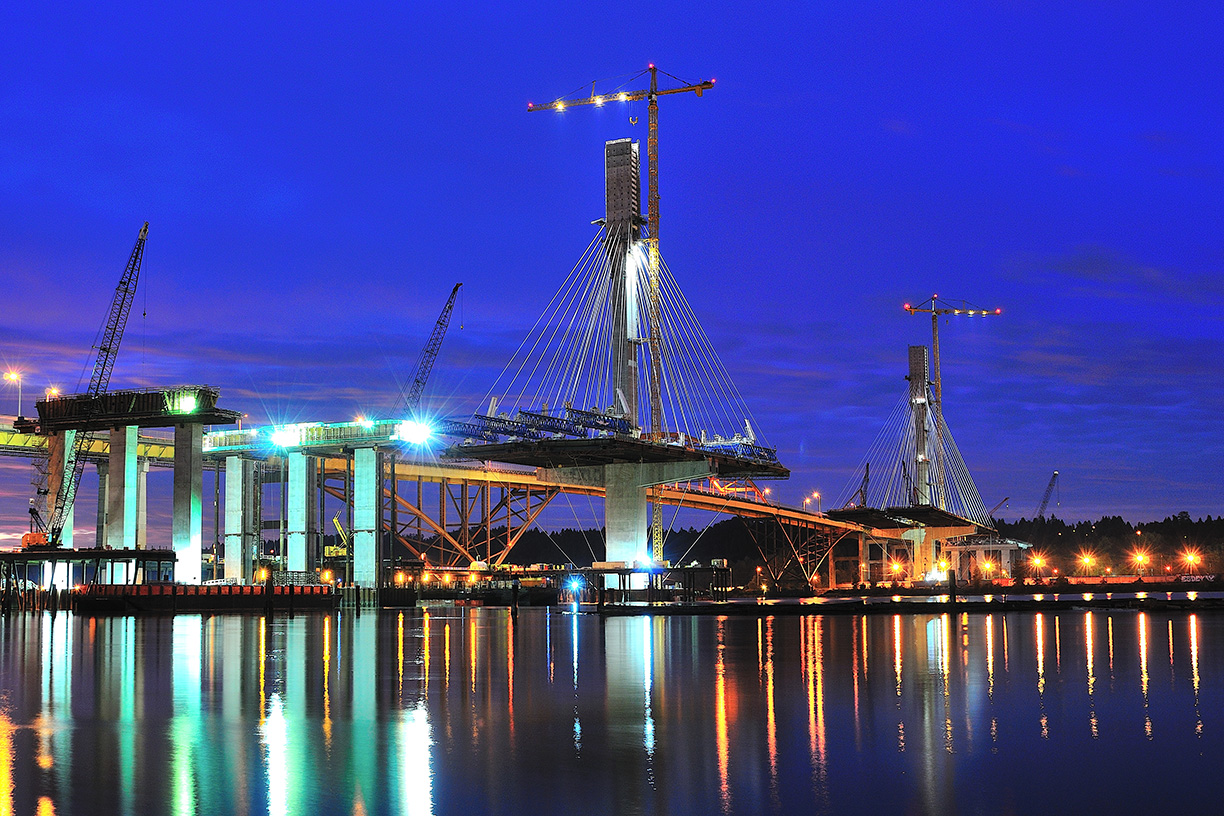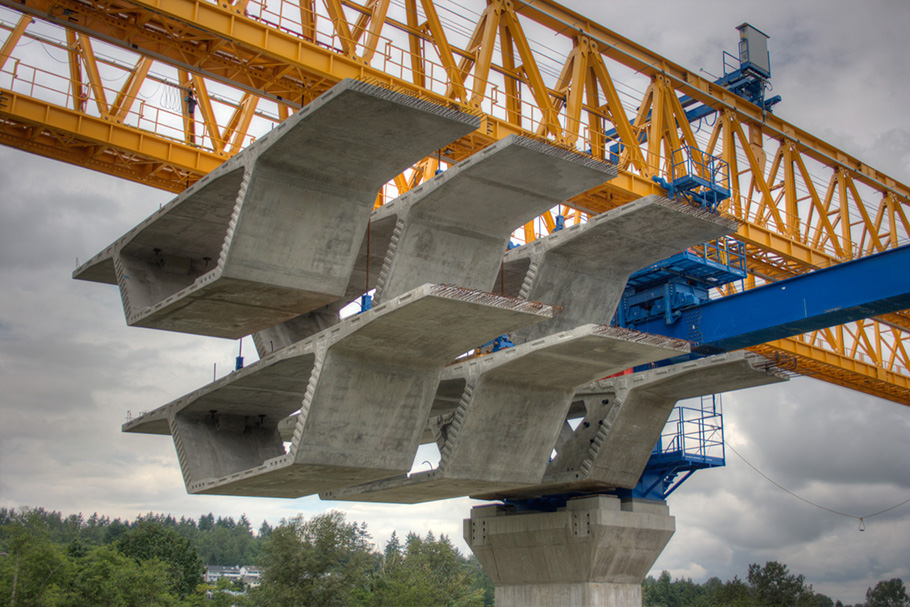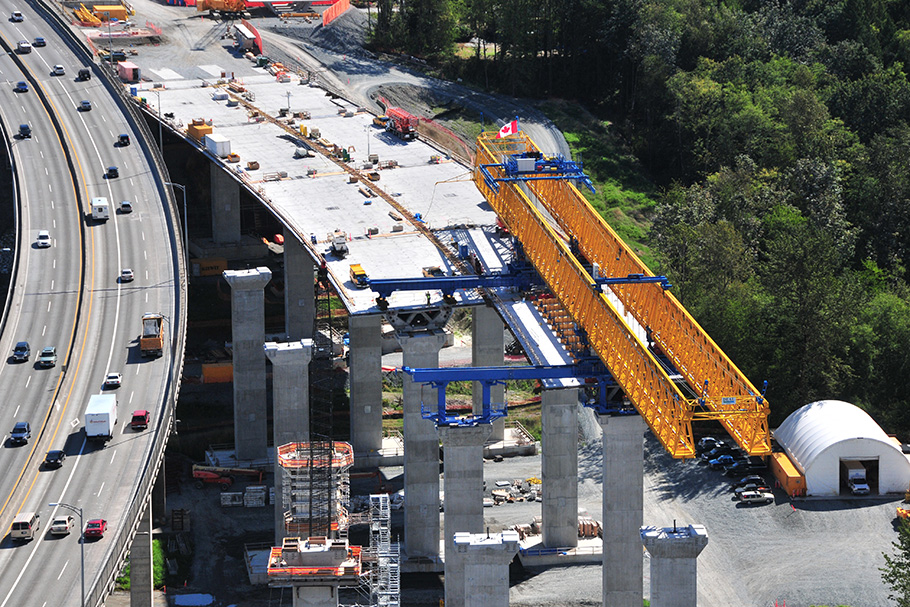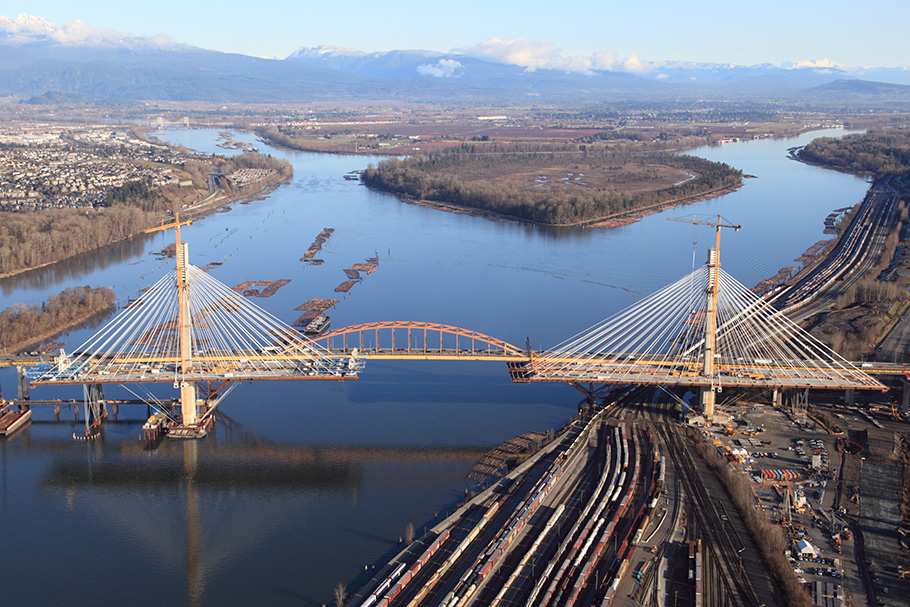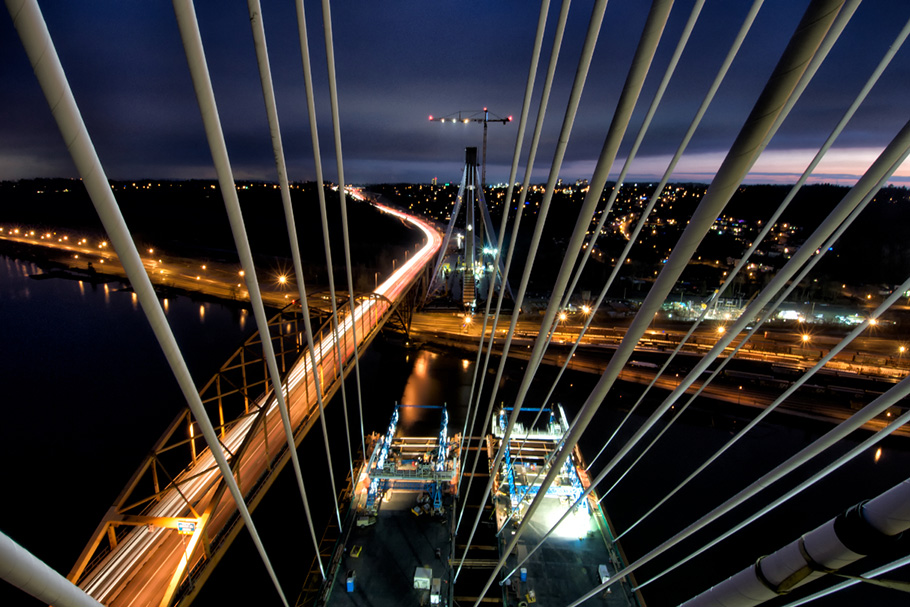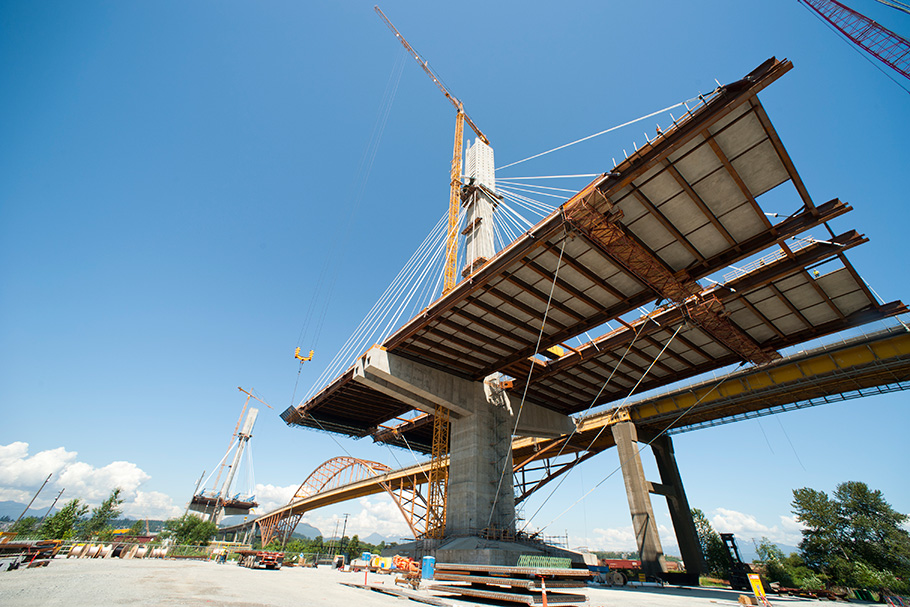Building Port Mann Bridge
The Port Mann Bridge is a new 10 lane cable-stayed bridge over the Fraser River in Vancouver, British Columbia. The 850-meter-long cable-stayed main span, one of the longest in the world, was constructed using the balanced cantilever method. The North and South main span superstructure consists of steel field sections, pre-cast deck panels and stay cables. The North and South approaches are both span-by-span superstructures with pre-cast segment decks. 144 cable stays extend from each 535-foot-tall tower. The project also included upgrading a total of 23 miles of Highway 1 on each side of the Fraser River.
Crews used installed four specially-modified Deal gantry trusses on the pier table of the bridge’s north pylon to lift the Main Span deck segments of the bridge into place. Each 92,000 pound custom fitted Deal gantry trusses consist of an overhead crane and two winches, each with a 52,000 pound capacity. The cranes traveled longitudinally along the gantries, while the winches move transversely and drop down hooks to hoist the Main Span deck segments into place.
The main span is flanked by two approaches, connecting Coquitlam in the north and Surrey in the south. The north and south approaches combined consisted of 1,158 segments weighing 80 tons each and erected by a 720-ton self-launching gantry.
The new bridge was constructed to help alleviate traffic congestion on the previous bridge and reduce travel times. The bridge is part of the Province’s larger Gateway Program established by the Province of British Columbia to address the region’s growing congestion and to improve mobility throughout Metro Vancouver. Tolls collected at the new bridge will finance the project.
Cable-stayed bridge across the Fraser River increases crossing from five to 10 lanes
Upgrade 23 miles of highway
Installation of 92,000 pound custom fitted Deal gantry trusses
Span-by-span superstructure with pre-cast segment decks

